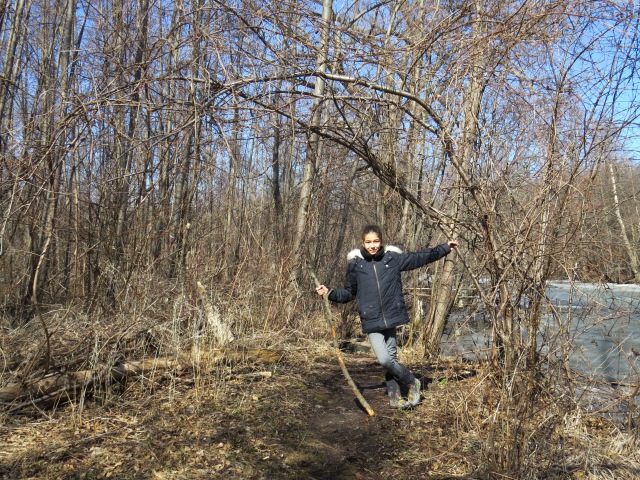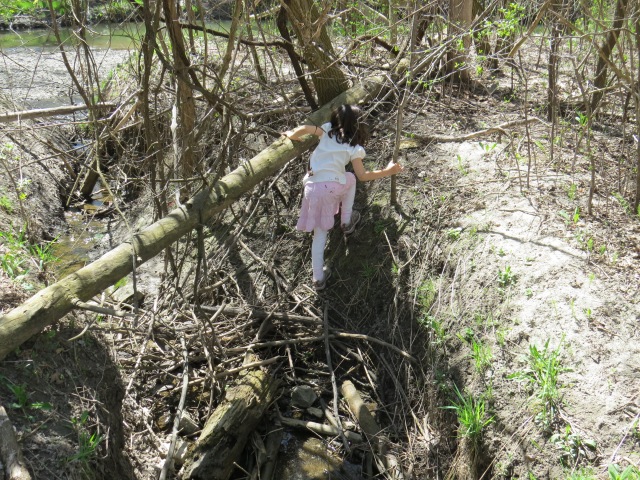Kaplan says, “Youth might be more attracted to environments that afford opportunities for independent action … and for gaining respect from peers and community.” How can I offer natural settings that offer my 12-year-old daughter opportunities for making choices and displaying competence?
 This spring the biggest desire and motivation of Rauz to be outdoors, to walk or bike in nature is to photograph. I say, “Ruaz I found these lovely flowers. You need to see them to take a photo.” She responds positively as she loves to photograph those flowers and also to post them on her Instagram page. The combination of her love for photography and having a strong Instagram presence/identity keeps her connection to nature live and meaningful.
This spring the biggest desire and motivation of Rauz to be outdoors, to walk or bike in nature is to photograph. I say, “Ruaz I found these lovely flowers. You need to see them to take a photo.” She responds positively as she loves to photograph those flowers and also to post them on her Instagram page. The combination of her love for photography and having a strong Instagram presence/identity keeps her connection to nature live and meaningful.
In our nature walk, she initiates the activities and I’m learning to listen and observe her to see what is meaningful and satisfying to her. Often in our beautiful flower scavenger hunt, we talk about the power of nature, its beauty, its magic. We might see human’s ugly foot print or we may just bring it up to remind ourselves that this powerful beauty at the same time is very fragile. I believe such emotional and cognitive moments in the natural environments of our everyday lives would deeply touch her heart and mind to encourage meaningful actions. After all, youth needs to demonstrate competence and show one is valued by one’s groups.



![IMG_5264[1]](https://farvehghafouri.wordpress.com/wp-content/uploads/2016/03/img_52641.jpg?w=640)
 he clouds.
he clouds.



